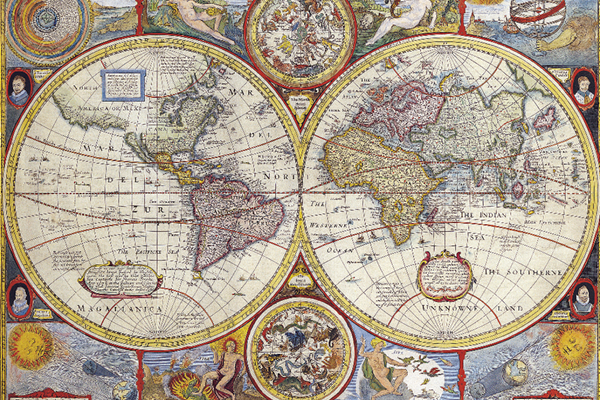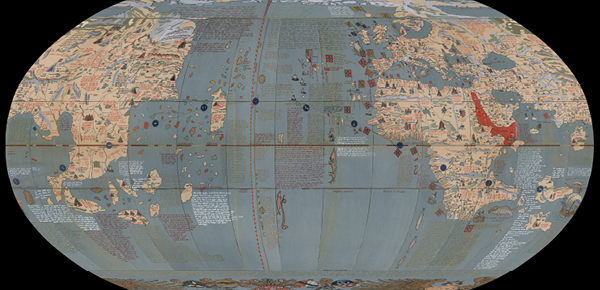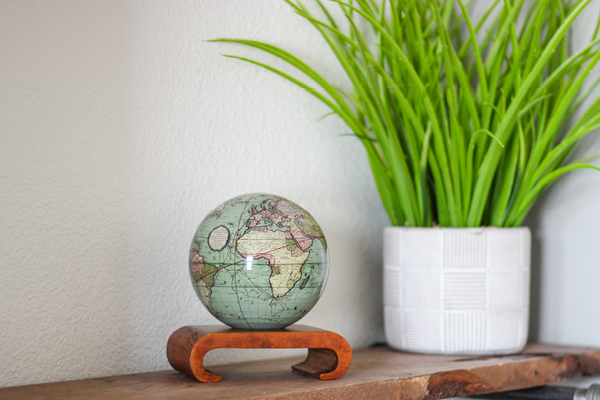From Flat Maps to Globes: A Journey Through Cartographic Evolution
Have you ever stopped to consider how our understanding of the world evolved from ancient flat maps to modern globes? While stories of Christopher Columbus boldly sailing west to prove the Earth’s shape are popular, the truth is more nuanced. Globes have existed since antiquity, although they only gained widespread use during the 15th and 16th centuries. In contrast, flat maps have been around for much longer—tracing back as far as Babylonian civilisation.
The Transition from Flat Maps to Globes

Since early human history, civilisations have sought to document the world around them. Ancient maps weren’t purely geographic—they were deeply influenced by prevailing religious beliefs. Cities of spiritual importance were often placed at the centre of the world, reflecting the symbolic order of the universe.
The oldest known map, created by the Babylonians around 600 B.C., was etched onto clay tablets. It depicted Babylon as a central square, surrounded by the Euphrates River and other regions like Assyria and Susa, represented as circles. Outlying lands—mysterious and unexplored—were marked with abstract shapes and names such as "beyond the flight of birds." These were believed to be inhabited by mythical beasts and divine forces, blending cartography with legend.
Among ancient cultures, the Greeks were the most advanced in their approach to cartography. Crates of Mallus, a Greek philosopher from what is now Turkey, is credited with creating the first known globe around 150 B.C. Although the original no longer survives, later scholars documented its spherical form. Centuries earlier, Pythagoras had already theorised that the Earth was round—a view confirmed by Aristotle through astronomical observation.
The First Surviving Globes

Although Columbus didn’t ‘prove’ the Earth’s shape, the oldest surviving globe was constructed during his lifetime. Created by German geographer Martin Behaim in the late 15th century, the Erdapfel or "Earth Apple" excluded the Americas, Australia, and Antarctica—reflecting the limited knowledge of the time. This historic globe still exists today and is preserved in Germany.
Just a few years later, in 1510, the Hunter-Lenox Globe was produced. It eventually made its way to the United States and is now housed in the New York Public Library’s Rare Book Division. Unlike Behaim’s globe, this one included South America, though it still depicted North America as scattered islands. The globe’s most intriguing feature is the phrase "Here be dragons," warning of unknown dangers in uncharted oceans.
The Hunter-Lenox Globe has been linked to a 1504 globe made from an ostrich egg—the only other known globe to bear the “dragons” inscription. Some speculate it may have been designed by Leonardo da Vinci, due to stylistic similarities and his connection to wealthy Italian patrons who might have commissioned such a work. Whether crafted by da Vinci or not, both globes highlight how early scientists were well aware of Earth’s spherical shape long before Columbus set sail.
Why Globes Offer a Truer Picture Than Flat Maps
So why is a globe considered more accurate than a flat map? Quite simply, it mirrors the shape of our planet. Unlike flat maps, which inevitably distort proportions and distances, globes offer a more faithful three-dimensional representation of Earth’s surface. During the Age of Exploration, this accuracy became essential. With entire nations vying for new lands, understanding true geography was vital for successful navigation and territorial claims.
In the modern age, despite advances in digital mapping and satellite technology, globes remain a valuable educational tool. Their tactile nature and spherical shape make them especially useful for teaching geography, helping students understand the relative positions and scale of continents, oceans, and countries in a way no flat map can.
Beyond the classroom, globes serve as elegant decorative pieces. Whether celebrating the heritage of exploration or presenting a stunning view of Earth as seen from space, today’s decorative globes offer both beauty and historical significance. MOVA Globes, in particular, blend cutting-edge technology with traditional craftsmanship, resulting in rotating globes powered by ambient light and magnetism—perfect for modern interiors.



